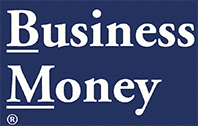Casual business dress code for a meeting
The days of employees wearing power suits or business heels are entirely over, but this remained a standard in a few industries.
Being properly dressed for your job might not be your priority, but the truth is that following a dress code will prove that you are putting in a good effort to follow the company’s culture and be a member of the team at large.
Business casual dress code for women – what to wear to a meeting
The simplest way to think of casual is a hybrid of business professional and casual attire. Business casual does not mean you need to wear a strapless sundress with flip-flops nor a full-on suit.
Business casual means that you mix elements of more formal business wear like a blazer, suit skirt or pants in neutral colors with more casual pieces. For instance, a patterned shell top or leopard print flats.
Women are lucky to get several business casual dress options ranging from tidy jeans and slacks to blouses and sweaters. Some business casual clothing options for women are:
- Slacks, khaki pants, chinos, or knee-length skirts
- Blouses, sweaters, button-downs, henleys, or polo shirts
- Knee-length dresses
- Optional hose or tights, especially for added warmth during colder months
- Optional cardigans, blazers, or jackets
- Closed-toed shoes such as loafers, oxfords, pumps, flats, or boots
- Simple, professional accessories such as scarves, belts, or jewelry
Business casual dress code for men – what to wear to a meeting
Business casual attire for men is typically less complex. An acceptable alternative is a full suit to pants paired with a professional shirt and button-down or sweater.
Business casual clothing options for men might include:
- Business dress pants, khakis, or pressed slacks
- Button-down shirts, dress shirts, sweaters, or polo shirts
- Professional-looking closed-toed shoes, like your loafers, oxfords, or brogues with dark dress socks
- A belt that matches your shoes with an optional tie and jacket or sport coat
General business casual dress code tips
Check out your surrounding at work and see what people are wearing
You might have one of the jobs where the owners dress in t-shirts while having a nice, high-quality beard comb in their pants pocket and probably wear a tie. So look up your office style as a whole, check around so you can be able to spot an average.
Find out if other people are putting on sports coats and button-up shirts. Then you should probably lean towards the business side. Are there a lot of guys in your company that wear jeans, boots, and sweaters? If yes, then you should be leaning towards causal.
Ask HR
If there is an HR department in your company, they will be the best option for getting information about what’s appropriate to dress at work. Also, speak to your company’s managers about what to put on.
Adapt to the post-pandemic workplace
Due to the pandemic and the inflow of employees working from home over the past year, we are now facing a cultural drift in the workplace. As a result, we probably won’t be returning to the buttoned-up, “business casual,” or corporate environments.
As for attire, that means that choosing to go with your beard comb and sweatshirts and sweatpants will likely become more welcomed in the office, and we might finally get to a place where we don’t need to have a different wardrobe for work.
Beware of casual Fridays
Certain business organizations let their employees dress a lot more casually on Fridays than other weekdays. Therefore, you should note the kind of attire that’s acceptable for casual Friday by checking out the attire of your colleagues to avoid staying too far from the daily dress code.
Avoid wearing clothes that feature offensive images or language, affiliations with political groups, or other logos that may look unprofessional.
Overdress for the interview
When deciding what to put on for an interview, it might be better not to overdress or underdress. If a company has a strict rule concerning a business casual dress code, wear a full suit for your first in-person interview. This will let you have a chance to make a good first impression and identify what others put on so you can follow their style in subsequent interviews.
By following the footsteps of your coworkers, you will be able to stay put within the boundaries of good taste. Relaxed dress codes happen to be one of the many ways the workplace has evolved, and you can be certain that more transformations are coming.
After getting a new job, you might need to learn some tips and tricks to help you keep to a budget. By doing this, you wouldn’t have to spend a ton of cash getting new outfits and stuff you don’t need.

